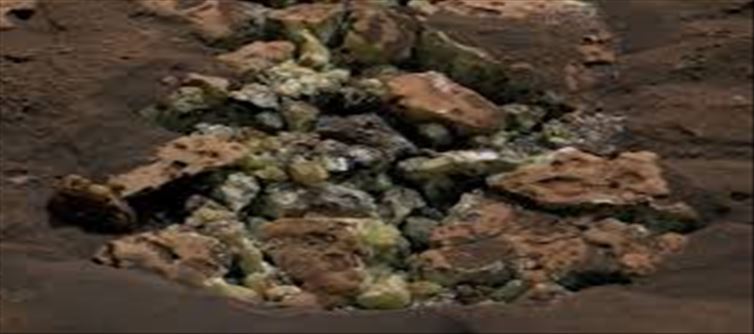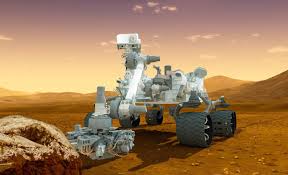
Do you know what amazing material was found inside the rock during the Curiosity rover's explorations on Mars? The Curiosity rover on the red planet Mars is currently exploring the planet's Gediz Vallis channel, a crater in a 5-kilometer-high mountain. Each of its layers holds hidden secrets about Mars. By exploring this hill which represents the different periods of Mars, we can get information about the planet Mars. While NASA's Curiosity rover has made several discoveries on Mars, its recent research has surprised scientists. Last May, NASA's Curiosity rover found a yellow sulfur crystal when it broke some rocks on Mars. This is the first yellow sulfur crystal found on Mars. What makes this invention special is that it is a very pure form of sulfur.
.jpg) "Finding rocks made of pure sulfur is like finding an oasis in the desert," said Ashwin Vasavada, Curiosity's project scientist. This discovery by NASA's Curiosity rover was found in an area rich in sulfates. It was noted that sulfate, carried by Curiosity, is a type of salt that contains sulfur and is formed after water evaporates. Although sulfur has been found on Mars before, they are sulfur-based mineral. But Curiosity's recent discovery suggests that the rock contains elemental or pure sulfur, and many rocks in the area are believed to contain pure sulfur.
"Finding rocks made of pure sulfur is like finding an oasis in the desert," said Ashwin Vasavada, Curiosity's project scientist. This discovery by NASA's Curiosity rover was found in an area rich in sulfates. It was noted that sulfate, carried by Curiosity, is a type of salt that contains sulfur and is formed after water evaporates. Although sulfur has been found on Mars before, they are sulfur-based mineral. But Curiosity's recent discovery suggests that the rock contains elemental or pure sulfur, and many rocks in the area are believed to contain pure sulfur. Scientists had not yet hypothesized or discovered that the conditions necessary to create sulfur would exist in this particular location, so this discovery is considered very important. Not only that, sulfur usually smells like rotten eggs. This smell is caused by hydrogen sulfide gas. But the elemental sulfur that scientists have now found in Martian rock has no smell. The Curiosity rover, exploring the Gediz Vallis channel on Mars, has been climbing the mountain since 2014, with the aim of learning about sources of nutrition for microbes on Mars.
Scientists had not yet hypothesized or discovered that the conditions necessary to create sulfur would exist in this particular location, so this discovery is considered very important. Not only that, sulfur usually smells like rotten eggs. This smell is caused by hydrogen sulfide gas. But the elemental sulfur that scientists have now found in Martian rock has no smell. The Curiosity rover, exploring the Gediz Vallis channel on Mars, has been climbing the mountain since 2014, with the aim of learning about sources of nutrition for microbes on Mars.Scientists believe that flowing water in the Gediz Vallis channel area created a crater-like channel, and the debris that the river carried down the mountainside is believed to have deposited two miles of rock and sediment. This research aims to understand why there is no water (fluid) flow and how the current landscape emerged.




 click and follow Indiaherald WhatsApp channel
click and follow Indiaherald WhatsApp channel